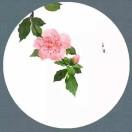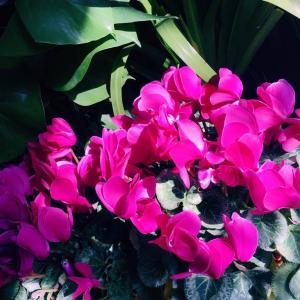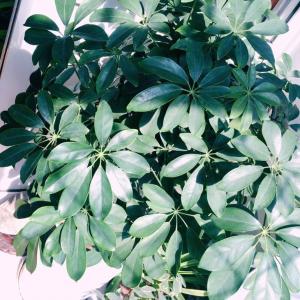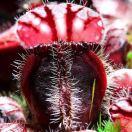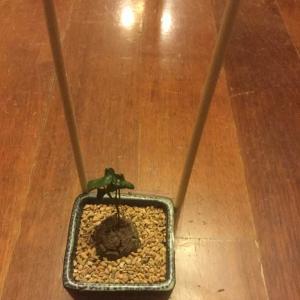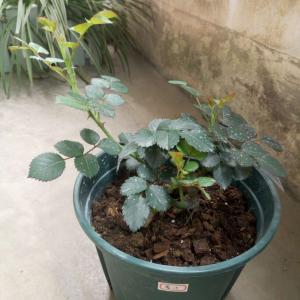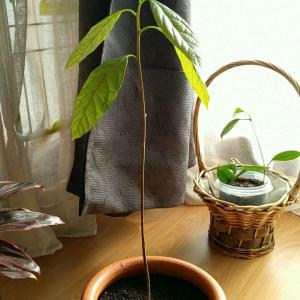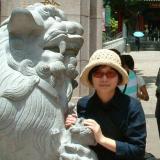文章
Miss Chen
2018年02月21日

Description: This perennial plant is usually 4-12" tall and unbranched. There is a rosette of 2-6 strap-like basal leaves that are individually about 3-8" long and 1/3" (8 mm.) across. They are linear to linear-oblanceolate with smooth margins, and usually wither away before the flowers bloom. On robust specimens, there may be 1 or 2 small leaves on the lower flowering stalk. The flowering stalk is up to 1' tall, with 6-12 flowers occurring on the upper half. These flowers are arranged on the stalk as intertwined double spirals – as a result, the individual spirals are not readily discernible. The flowering stalk is light green and covered more or less with white glandular hairs. At the base of each flower, there is a conspicuous green bract that is curved and narrowly ovate. Each flower is about 1/3" (8 mm.) long, consisting of 3Flowering Stalk white sepals and 3 white petals. The upper sepal and upper two petals are fused together and form a curved hood that curls upward at its tip, forming a small upper lip with 3 lobes. The lower petal has a prominent lip that hangs downward and has a crystalline appearance, while the lateral sepals are linear and non-spreading. Together, these sepals and petals form a tubular-shaped flower that nods downward. The blooming period can occur from late summer until the fall, and lasts about a month. There is usually a mild floral scent. Some plants may form cleistogamous flowers. Fertilized flowers are replaced by pods containing the tiny seeds, which are easily carried aloft by the wind. These pods may be capable of photosynthesis while they are green. The root system consists of a cluster of fleshy roots at the base of the plant that are finger-like in shape, and occasional rhizomes may be produced. This orchid can reproduce from the seeds of the flowers, or it may form offsets from rhizomes. Normal growth and development won't occur unless the root system forms an endomycorrhizal association with the appropriate species of fungus.
Cultivation: For most ecotypes of this orchid, the preference is full or partial sun and moist sandy soil. Some ecotypes appear to flourish in thin rocky soil that is rather dry. Taller, more aggressive plants can out-compete this orchid for the available light, so it prefers rather open ground vegetation. Starting plants from seed is quite difficult; on the other hand, this orchid is easier to transplant than most others. Cultivars of this orchid species are available from the mass horticultural market, while local ecotypes are next to impossible to obtain.
Range & Habitat: Nodding Ladies' Tresses occurs occasionally throughout Illinois, where it is native; for an orchid species, it is fairly common (see Distribution Map). Habitats include moist sand prairies, sandy savannas, areas adjacent to paths in sandy woodlands, shrubby bogs, sandy pannes near lakes, gravelly seeps, limestone glades, bluffs, sandy pits, ditches, and abandoned fields. This orchid typically occurs in somewhat disturbed areas of high quality habitats, and appears to respond positively to occasional wildfires. Individual plants are usually scattered about, rather than forming dense colonies.
Faunal Associations: Both long-tongued and short-tongued bees occasionally visit the flowers for nectar. The seeds are too small to be of any interest to birds. The foliage can be eaten by various mammalian herbivores, including rabbits, groundhogs, and deer, while the fleshy roots are probably eaten by pocket gophers when individual plants stray into drier areas.
Photographic Location: The photographed plant was growing in a sandy swale at the Indiana Dunes National Lakeshore in NW Indiana.

Comments: While rather small-sized, the bright white spike of flowers provides a striking contrast with the background vegetation and is fairly easy to spot. The individual flowers are attractive, particularly when they are viewed close-up; in particular, the lower lip has an intricate crystalline pattern that can vary significantly from flower to flower. Unlike the Ladies' Tresses orchids that form a single spiral of flowers, such as Spiranthes lacera (Slender Ladies' Tresses), the Nodding Ladies' Tresses falls into the group of Spiranthes spp. with double intertwined spirals that are difficult to discern because of the density of flowers on the spike. The Spiranthes spp. in this group are distinguished from each other primarily by considering the variation in the structure of their flowers and the shape of their leaves. Nodding Ladies' Tresses can be distinguished from these other species by the downward curve of its tubular flowers, providing them with a 'nodding' appearance.
Cultivation: For most ecotypes of this orchid, the preference is full or partial sun and moist sandy soil. Some ecotypes appear to flourish in thin rocky soil that is rather dry. Taller, more aggressive plants can out-compete this orchid for the available light, so it prefers rather open ground vegetation. Starting plants from seed is quite difficult; on the other hand, this orchid is easier to transplant than most others. Cultivars of this orchid species are available from the mass horticultural market, while local ecotypes are next to impossible to obtain.
Range & Habitat: Nodding Ladies' Tresses occurs occasionally throughout Illinois, where it is native; for an orchid species, it is fairly common (see Distribution Map). Habitats include moist sand prairies, sandy savannas, areas adjacent to paths in sandy woodlands, shrubby bogs, sandy pannes near lakes, gravelly seeps, limestone glades, bluffs, sandy pits, ditches, and abandoned fields. This orchid typically occurs in somewhat disturbed areas of high quality habitats, and appears to respond positively to occasional wildfires. Individual plants are usually scattered about, rather than forming dense colonies.
Faunal Associations: Both long-tongued and short-tongued bees occasionally visit the flowers for nectar. The seeds are too small to be of any interest to birds. The foliage can be eaten by various mammalian herbivores, including rabbits, groundhogs, and deer, while the fleshy roots are probably eaten by pocket gophers when individual plants stray into drier areas.
Photographic Location: The photographed plant was growing in a sandy swale at the Indiana Dunes National Lakeshore in NW Indiana.

Comments: While rather small-sized, the bright white spike of flowers provides a striking contrast with the background vegetation and is fairly easy to spot. The individual flowers are attractive, particularly when they are viewed close-up; in particular, the lower lip has an intricate crystalline pattern that can vary significantly from flower to flower. Unlike the Ladies' Tresses orchids that form a single spiral of flowers, such as Spiranthes lacera (Slender Ladies' Tresses), the Nodding Ladies' Tresses falls into the group of Spiranthes spp. with double intertwined spirals that are difficult to discern because of the density of flowers on the spike. The Spiranthes spp. in this group are distinguished from each other primarily by considering the variation in the structure of their flowers and the shape of their leaves. Nodding Ladies' Tresses can be distinguished from these other species by the downward curve of its tubular flowers, providing them with a 'nodding' appearance.
0
0
文章
Miss Chen
2018年02月21日

Description: This perennial plant is unbranched and about ½-2½' tall. The central stem is reddish or grayish green, terete, and densely covered with short white hairs. The alternate leaves are up to 4" long and ¾" across, becoming smaller as they ascend the stem. They are grayish green, narrowly lanceolate, elliptic, or oblanceolate in shape, tapering gradually to narrow petioles. The leaf margins are smooth (entire) or slightly serrate, while the leaf surfaces are canescent. In addition, there are usually small clusters of secondary leaves that are located along the axils of middle to upper leaves. These secondary leaves are much smaller in size than the alternate leaves, otherwise they are similar in appearance. The central stem terminates in a narrow inflorescence that is shaped like a wand, becoming gradually wider in the middle, and it has a tendency to nod. This inflorescence is typically 3-8" long; it is a narrow panicle of flowerheads with short lateral branches. Each flowerhead is up to ¼" across, consisting of 4-10 ray florets that surround a similar number of disk florets. The petaloid rays of the flowerheads are yellow; the tiny tubular corollas of the disk florets are also yellow. Around the base of each flowerhead, there are scale-like floral bracts (phyllaries) in several series; they are usually pale yellow or pale greenish yellow. The blooming period occurs during the fall and lasts about a month. The flowerheads occasionally have a slight fragrance. After the blooming period, the flowerheads are replaced by achenes that develop tufts of hair; they are dispersed by the wind. The root system consists of a small caudex (at least on older plants) with fibrous roots and rhizomes. At suitable locations, Field Goldenrod has a tendency to form clonal colonies.
Cultivation: The preference is full sun and dry-mesic to dry soil. Because of reduced competition, Field Goldenrod thrives best in soil containing sand, clay or gravel, but it will flourish in fertile soil as well. This plant is a good choice for difficult locations, such as sunny slopes or open areas with poor soil, where little else will grow.
Range & Habitat: The native Field Goldenrod occurs in most counties of Illinois, where it is occasional to locally common (see Distribution Map). Habitats include upland areas of black soil prairies, gravel prairies, sand prairies, hill prairies, thinly wooded bluffs, sandy savannas, sand dunes, fence rows, abandoned fields, eroded clay banks, roadsides, and areas along railroads. In some western states, Field Goldenrod is considered a troublesome weed, but in Illinois it occurs primarily in areas that have little value to agriculture and ranching. This goldenrod is found in both degraded and higher quality habitats.

Faunal Associations: A wide variety of insects visit the flowers for pollen and nectar, including long-tongued bees, short-tongued bees, Sphecid and Vespid wasps, flies, butterflies, moths, and beetles. Bee visitors include honey bees, little carpenter bees (Ceratina spp.), Halictid bees, plasterer bees (Colletes spp.), and Andrenid bees. Several Andrenid bees are oligoleges (specialist pollinators) of goldenrods. Fly visitors include Syrphid flies, Tachinid flies, flesh flies, blow flies, and Muscid flies. Other insects feed destructively on the foliage, florets, roots, and other parts of Field Goldenrod and other goldenrods. These insect feeders include Lopidea media (Goldenrod Plant Bug), Corythucha marmorata (Goldenrod Lace Bug), Hesperotettix viridis (Meadow Purple-Striped Grasshopper) and Melanoplus confusus (Little Pasture Grasshopper), the leaf beetles Longitarsus solidaginis and Ophraella sexvititta, the aphids Acuticauda solidaginifoliae and Uroleucon rudbeckiae, and Manomera blatchleyi (Blatchley's Walkingstick). In addition, the caterpillars of many moths feed on various parts of goldenrods (see Moth Table). Goldenrods are sources of food to some vertebrate animals. For example, the seeds, flowerheads, and leaves are eaten by the Greater Prairie Chicken and possibly other upland gamebirds; the Eastern Goldfinch also eats the seeds. Mammalian herbivores, such as groundhogs, rabbits, deer, and livestock, will browse on Field Goldenrod and other goldenrods occasionally, although they are not preferred as sources of food.

Photographic Location: The photographs were taken at a prairie of Parkland College in Champaign, Illinois.
Comments: This small goldenrod blooms later than most goldenrods. Field Goldenrod can be distinguished from other goldenrods that occur in Illinois prairies and other open areas by the presence of secondary leaflets along the central stem and the presence of short fine hairs on both the leaves and central stem. In addition, the inflorescence is usually more narrow and wand-like than those of other goldenrods.
Cultivation: The preference is full sun and dry-mesic to dry soil. Because of reduced competition, Field Goldenrod thrives best in soil containing sand, clay or gravel, but it will flourish in fertile soil as well. This plant is a good choice for difficult locations, such as sunny slopes or open areas with poor soil, where little else will grow.
Range & Habitat: The native Field Goldenrod occurs in most counties of Illinois, where it is occasional to locally common (see Distribution Map). Habitats include upland areas of black soil prairies, gravel prairies, sand prairies, hill prairies, thinly wooded bluffs, sandy savannas, sand dunes, fence rows, abandoned fields, eroded clay banks, roadsides, and areas along railroads. In some western states, Field Goldenrod is considered a troublesome weed, but in Illinois it occurs primarily in areas that have little value to agriculture and ranching. This goldenrod is found in both degraded and higher quality habitats.

Faunal Associations: A wide variety of insects visit the flowers for pollen and nectar, including long-tongued bees, short-tongued bees, Sphecid and Vespid wasps, flies, butterflies, moths, and beetles. Bee visitors include honey bees, little carpenter bees (Ceratina spp.), Halictid bees, plasterer bees (Colletes spp.), and Andrenid bees. Several Andrenid bees are oligoleges (specialist pollinators) of goldenrods. Fly visitors include Syrphid flies, Tachinid flies, flesh flies, blow flies, and Muscid flies. Other insects feed destructively on the foliage, florets, roots, and other parts of Field Goldenrod and other goldenrods. These insect feeders include Lopidea media (Goldenrod Plant Bug), Corythucha marmorata (Goldenrod Lace Bug), Hesperotettix viridis (Meadow Purple-Striped Grasshopper) and Melanoplus confusus (Little Pasture Grasshopper), the leaf beetles Longitarsus solidaginis and Ophraella sexvititta, the aphids Acuticauda solidaginifoliae and Uroleucon rudbeckiae, and Manomera blatchleyi (Blatchley's Walkingstick). In addition, the caterpillars of many moths feed on various parts of goldenrods (see Moth Table). Goldenrods are sources of food to some vertebrate animals. For example, the seeds, flowerheads, and leaves are eaten by the Greater Prairie Chicken and possibly other upland gamebirds; the Eastern Goldfinch also eats the seeds. Mammalian herbivores, such as groundhogs, rabbits, deer, and livestock, will browse on Field Goldenrod and other goldenrods occasionally, although they are not preferred as sources of food.

Photographic Location: The photographs were taken at a prairie of Parkland College in Champaign, Illinois.
Comments: This small goldenrod blooms later than most goldenrods. Field Goldenrod can be distinguished from other goldenrods that occur in Illinois prairies and other open areas by the presence of secondary leaflets along the central stem and the presence of short fine hairs on both the leaves and central stem. In addition, the inflorescence is usually more narrow and wand-like than those of other goldenrods.
0
0
文章
Miss Chen
2018年02月20日

Description: This is a herbaceous perennial plant with a central stem that is 2-6' tall. Because of the wide distribution and the existence of several varieties, there is significant variability in the characteristics of local ecotypes. The alternate leaves are about 4-6" long and 1" wide, becoming slightly smaller towards the apex of the plant. They are lanceolate to broadly linear in shape, and usually have small teeth along the margins, otherwise the margins are smooth. The stems have lines of white hairs, while the undersides of the leaves are pubescent.
Flowering Plant
Several flowering stems emerge from the top of the plant in the form of a panicle bearing masses of tiny yellow flowers in compact heads. Each flowerhead is less than ¼" across. The flowerhead occur along the upper part of each flowering stem, and sometimes have a slight fragrance. The blooming period is from late summer to fall; individual plants typically remain in bloom about 3 weeks. The achenes are longitudinally ribbed, slightly hairy, and have small tufts of hair, which help to provide dispersion by wind. The root system is fibrous, producing creeping rhizomes that cause the plants to cluster, sometimes forming dense colonies.

Cultivation: The preference is full to partial sun, and average moisture levels. This plant will tolerate some drought, in which case it will probably drop some of its lower leaves. This plant tolerates a variety of soils, perhaps even preferring a heavier soil with some clay content. During the fall, powdery mildew occasionally attacks the leaves.
Range & Habitat: The native Canada Goldenrod occurs in almost all of the counties in Illinois and it is very common (see Distribution Map). Natural habitats include disturbed areas of moist to dry prairies, openings in both floodplain and upland forests, thickets, savannas, limestone glades, and gravel seeps. In more developed areas, it occurs in both cultivated and abandoned fields, vacant lots, power-line clearance areas, and along fences, roadsides, and railroads.

Faunal Associations: A wide variety of insects visit the flowers for pollen or nectar, including long-tongued bees, short-tongued bees, wasps, flies, beetles, and a few butterflies and moths. Cross-pollination by these insects is required in order to set fertile seeds. The caterpillars of many moths feed on the foliage and other parts of this goldenrod and others (see Moth Table). A common insect that forms spherical galls on the stems is Eurosta solidaginis (Goldenrod Gall Fly). Other insects that feed on this goldenrod include Epicauta pensylvanica (Black Blister Beetle), Lopidea media (Goldenrod Scarlet Plant Bug), Lygus lineolaris (Tarnished Plant Bug), and various leaf beetles and leafhoppers. Among mammals and birds, the Prairie Chicken, Eastern Goldfinch, and Swamp Sparrow eat the seeds, while the White-Tailed Deer and Eastern Cottontail Rabbit occasionally eat the foliage (although it is not a preferred food source). In overgrazed pastures, there have been reports of a rust fungus on the leaves of goldenrod poisoning livestock during the fall. Sometimes beavers and muskrats use the stems in their dams or dens.

Photographic Location: The photographs were taken in a vacant lot along a railroad in Urbana, Illinois.
Comments: This is the most common and weedy goldenrod in Illinois. The flowers are especially attractive to many species of wasps and flies, which play an important role in controlling insect pests, or breaking down organic matter in the detritus cycle. The species Solidago altissima (Tall Goldenrod) is considered a variety of Canada Goldenrod by some authorities, while others (e.g., Mohlenbrock, 2002) treat it as a separate species. According to the latter authority, Tall Goldenrod has longer phyllaries (floral bracts) at the base of its flowerheads (exceeding 3 mm. in length), while Canada Goldenrod has shorter phyllaries (3 mm. or less). It has been reported that the foliage of Canada Goldenrod contains a volatile oil that chemically resembles the oil from pine needles. There is also some experimental evidence that this species inhibits the growth of maple seedlings, and probably other plants as well, by exuding phytotoxic chemicals through its roots.
Flowering Plant
Several flowering stems emerge from the top of the plant in the form of a panicle bearing masses of tiny yellow flowers in compact heads. Each flowerhead is less than ¼" across. The flowerhead occur along the upper part of each flowering stem, and sometimes have a slight fragrance. The blooming period is from late summer to fall; individual plants typically remain in bloom about 3 weeks. The achenes are longitudinally ribbed, slightly hairy, and have small tufts of hair, which help to provide dispersion by wind. The root system is fibrous, producing creeping rhizomes that cause the plants to cluster, sometimes forming dense colonies.

Cultivation: The preference is full to partial sun, and average moisture levels. This plant will tolerate some drought, in which case it will probably drop some of its lower leaves. This plant tolerates a variety of soils, perhaps even preferring a heavier soil with some clay content. During the fall, powdery mildew occasionally attacks the leaves.
Range & Habitat: The native Canada Goldenrod occurs in almost all of the counties in Illinois and it is very common (see Distribution Map). Natural habitats include disturbed areas of moist to dry prairies, openings in both floodplain and upland forests, thickets, savannas, limestone glades, and gravel seeps. In more developed areas, it occurs in both cultivated and abandoned fields, vacant lots, power-line clearance areas, and along fences, roadsides, and railroads.

Faunal Associations: A wide variety of insects visit the flowers for pollen or nectar, including long-tongued bees, short-tongued bees, wasps, flies, beetles, and a few butterflies and moths. Cross-pollination by these insects is required in order to set fertile seeds. The caterpillars of many moths feed on the foliage and other parts of this goldenrod and others (see Moth Table). A common insect that forms spherical galls on the stems is Eurosta solidaginis (Goldenrod Gall Fly). Other insects that feed on this goldenrod include Epicauta pensylvanica (Black Blister Beetle), Lopidea media (Goldenrod Scarlet Plant Bug), Lygus lineolaris (Tarnished Plant Bug), and various leaf beetles and leafhoppers. Among mammals and birds, the Prairie Chicken, Eastern Goldfinch, and Swamp Sparrow eat the seeds, while the White-Tailed Deer and Eastern Cottontail Rabbit occasionally eat the foliage (although it is not a preferred food source). In overgrazed pastures, there have been reports of a rust fungus on the leaves of goldenrod poisoning livestock during the fall. Sometimes beavers and muskrats use the stems in their dams or dens.

Photographic Location: The photographs were taken in a vacant lot along a railroad in Urbana, Illinois.
Comments: This is the most common and weedy goldenrod in Illinois. The flowers are especially attractive to many species of wasps and flies, which play an important role in controlling insect pests, or breaking down organic matter in the detritus cycle. The species Solidago altissima (Tall Goldenrod) is considered a variety of Canada Goldenrod by some authorities, while others (e.g., Mohlenbrock, 2002) treat it as a separate species. According to the latter authority, Tall Goldenrod has longer phyllaries (floral bracts) at the base of its flowerheads (exceeding 3 mm. in length), while Canada Goldenrod has shorter phyllaries (3 mm. or less). It has been reported that the foliage of Canada Goldenrod contains a volatile oil that chemically resembles the oil from pine needles. There is also some experimental evidence that this species inhibits the growth of maple seedlings, and probably other plants as well, by exuding phytotoxic chemicals through its roots.
0
0
文章
Miss Chen
2018年02月20日

Description: This perennial plant is ½–1' tall, forming a a tuft of linear basal leaves with smooth margins. The basal leaves are 2-3 mm. across, flattened, pale green, and glabrous. One or more flowering stalks develop from among the basal leaves; these stalks are about the same length or somewhat taller than the leaves. The linear stalks are 1-2 mm. across, pale green, and glabrous; each stalk has a stiff raised ridge that runs along the flattened sides of its length. Each stalk produces a pair of sessile claw-like bracts (or spathe) near its apex, between which a single umbel of flowers occurs. The outer bract is ¾-1" long, while the inner bract is ½-¾" in length (sometimes the inner bract isn't distinct from the flowering stalk during the early stage of its development). Both bracts are some shade of pale green, pinkish purple, or brownish purple; they are linear-lanceolate in shape, slightly curved, and usually glabrous. The outer bract is somewhat swollen at its base. Each umbel has 3-6 flowers on slender pedicels that are about the same length as the bracts. The flower buds are hairy and nodding, while flowers in bloom are held more erect. Each flowers is up to ½" across, consisting of 6 tepals that are blue-violet, light blue, or white, and a yellow spike-like structure in its center that contains the reproductive organs. Near the center of the flower, the tepals are yellow. The tepals are oblong-elliptic in shape and they taper abruptly into short narrow tips. The blooming period occurs from late spring to early summer, lasting about 3 weeks. There is no noticeable floral scent. The flowers are replaced by 3-celled seed capsules. At maturity, these capsules are about 3 mm. long, ovoid-globoid in shape, and glabrous. Eventually, each capsule splits open into 3 sections to release the small dark seeds. The seeds are small enough to be dispersed a limited distance by gusts of wind. The root system is coarsely fibrous, and new plants can develop vegetatively from adjacent offsets.
Cultivation: The preference is full sun and mesic to dry conditions. The soil can contain significant amounts of loam, rocky material, or sand. This species of Blue-Eyed Grass is more drought-resistant than most of the others. Foliar disease is rarely a problem. While this plant can slowly spread by forming larger clumps, it is not aggressive.
Range & Habitat: Prairie Blue-Eyed Grass occurs primarily in western and northern Illinois, where it is fairly uncommon; in other parts of the state, this plant is rare or absent (see Distribution Map). Habitats include mesic to dry black soil prairies, sand prairies, hill prairies, savannas, limestone glades, sandy meadows in wooded areas, abandoned fields, and areas along railroads. This plant is usually found in high quality habitats.
Faunal Associations: The flowers are visited primarily by short-tongued bees, including Halictid bees and masked bees (Hylaeus spp.), where they seek nectar and pollen. Syrphid flies also visit the flowers, where they feed primarily on stray pollen. The Wild Turkey and Greater Prairie Chicken eat the seed capsules and/or foliage to a limited extent.

Photographic Location: The photographs were taken at Prospect Cemetery Prairie in Ford County, Illinois.
Comments: It can be difficult to distinguish the different species of Blue-Eyed Grass. The white form of Prairie Blue-Eyed Grass (as illustrated in the photographs) is quite similar in appearance to Sisyrinchium albidum (White Blue-Eyed Grass). Like most Sisyrinchium spp., Prairie Blue-Eyed Grass produces a single umbel of flowers between a pair of bracts on each flowering stalk, while White Blue-Eyed Grass produces 2 pairs of bracts with 2 umbels of flowers on each flowering stalk. White Blue-Eyed Grass also has slightly larger seed capsules and slightly wider leaves and flowering stalks. When Prairie Blue-Eyed Grass has blue-violet flowers, it can be confused with other Sisyrinchium spp. Generally, Prairie Blue-Eyed Grass has leaves and flowering stalks that are no wider than those of other species, and it never produces secondary flowering stalks from the primary flowering stalks that originate from among the basal leaves. The common name for this genus, Blue-Eyed Grass, is something of a misnomer because the flowers, whether white or blue-violet, have yellow centers.
Cultivation: The preference is full sun and mesic to dry conditions. The soil can contain significant amounts of loam, rocky material, or sand. This species of Blue-Eyed Grass is more drought-resistant than most of the others. Foliar disease is rarely a problem. While this plant can slowly spread by forming larger clumps, it is not aggressive.
Range & Habitat: Prairie Blue-Eyed Grass occurs primarily in western and northern Illinois, where it is fairly uncommon; in other parts of the state, this plant is rare or absent (see Distribution Map). Habitats include mesic to dry black soil prairies, sand prairies, hill prairies, savannas, limestone glades, sandy meadows in wooded areas, abandoned fields, and areas along railroads. This plant is usually found in high quality habitats.
Faunal Associations: The flowers are visited primarily by short-tongued bees, including Halictid bees and masked bees (Hylaeus spp.), where they seek nectar and pollen. Syrphid flies also visit the flowers, where they feed primarily on stray pollen. The Wild Turkey and Greater Prairie Chicken eat the seed capsules and/or foliage to a limited extent.

Photographic Location: The photographs were taken at Prospect Cemetery Prairie in Ford County, Illinois.
Comments: It can be difficult to distinguish the different species of Blue-Eyed Grass. The white form of Prairie Blue-Eyed Grass (as illustrated in the photographs) is quite similar in appearance to Sisyrinchium albidum (White Blue-Eyed Grass). Like most Sisyrinchium spp., Prairie Blue-Eyed Grass produces a single umbel of flowers between a pair of bracts on each flowering stalk, while White Blue-Eyed Grass produces 2 pairs of bracts with 2 umbels of flowers on each flowering stalk. White Blue-Eyed Grass also has slightly larger seed capsules and slightly wider leaves and flowering stalks. When Prairie Blue-Eyed Grass has blue-violet flowers, it can be confused with other Sisyrinchium spp. Generally, Prairie Blue-Eyed Grass has leaves and flowering stalks that are no wider than those of other species, and it never produces secondary flowering stalks from the primary flowering stalks that originate from among the basal leaves. The common name for this genus, Blue-Eyed Grass, is something of a misnomer because the flowers, whether white or blue-violet, have yellow centers.
0
0
求助
爱从零开始
2018年02月19日

求教!过年朋友送来2盆杜鹃,到家4天没浇水,2盆都不大精神了,马上都浇透,其中一盆恢复,另一盆依旧这个样,为啥?杜鹃怎么浇水?放在家里什么位置?


0
0
爱从零开始:@三妹家(招加盟,收学员) 几天一浇?自带的花盆里土不多,而且漏水,浇上一点就都漏了,咋办?
三妹家(招加盟,收学员):多浇水。


